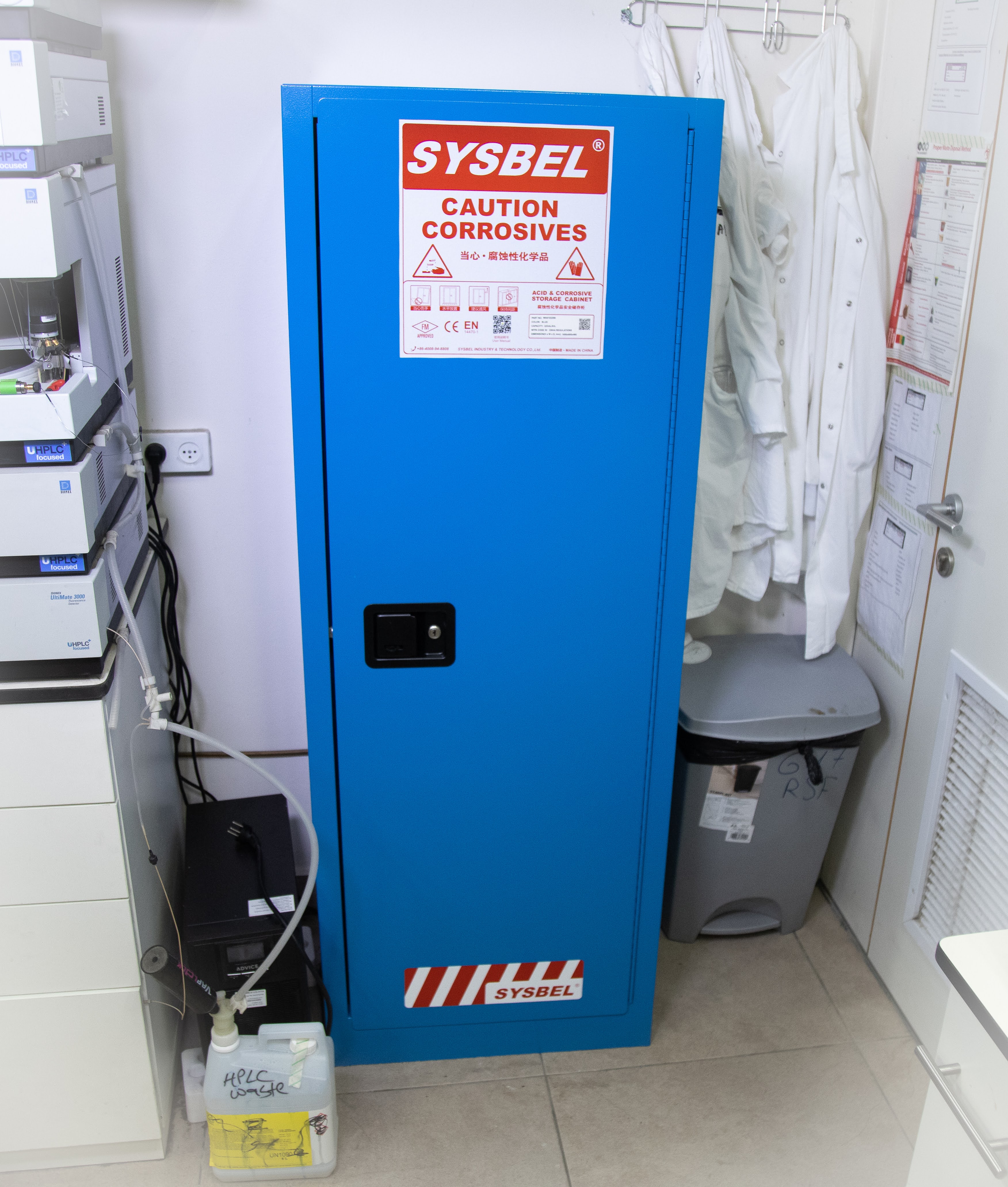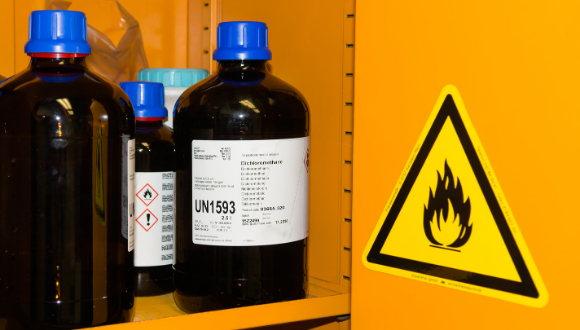Chemical storage
Typical storage considerations may include temperature, ignition control, ventilation, segregation and identification. Proper segregation is necessary to prevent incompatible materials from inadvertently coming into contact. A physical barrier and/or distance is effective for proper segregation
The inherent hazards of chemicals can be reduced by minimizing the quantity of chemicals on hand. Proper storage and handling can reduce or eliminate associated risks
Guidelines for chemicals storage at Faculty of Medicine
-
Chemicals permission at TAU is under Safety Unit: Dr. Dana Ashkenazi, tel: 03-6405579
- License of hazardous material at TAU is updated every two years
|
Chemicals |
Storage |
|---|---|
|
Powder |
Alphabetically inside lab cabinets |
|
Yellow safety cabinets Fireproofing vents to Efficiently reduce the Concentration of volatile
|
|
|
|
Secondary containment “trays” to avoid leaking |
|
|
Yellow cabinets can be placed in the hallway
|
|
|
Small amounts of flammable liquids may be stored in the open room |
|
|
TAU allows storage of 5 liters of flammable materials per 10 m2 lab area
|
|
acids, basics |
Blue safety cabinets |
|
|
Corrosive acids segregated in different shelves from corrosive basics |
|
|
Secondary containment “trays” to avoid leaking |
|
|
Blue cabinets must be inside the lab
|
Secondary containment for chemical storage (מאצרות)
|
ציוד למעבדה |
10025369 |
ארקלית2 PSA3219 HIPS כחול|||1EA |
|
10025370 |
ארקלית3 PSA2113 HIPS כחול|||1EA |


Flammable chemical yellow cabinet


Corrosive (basic, acid) blue cabinet


